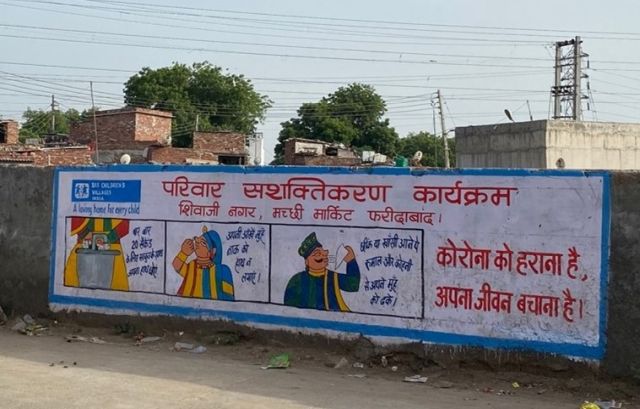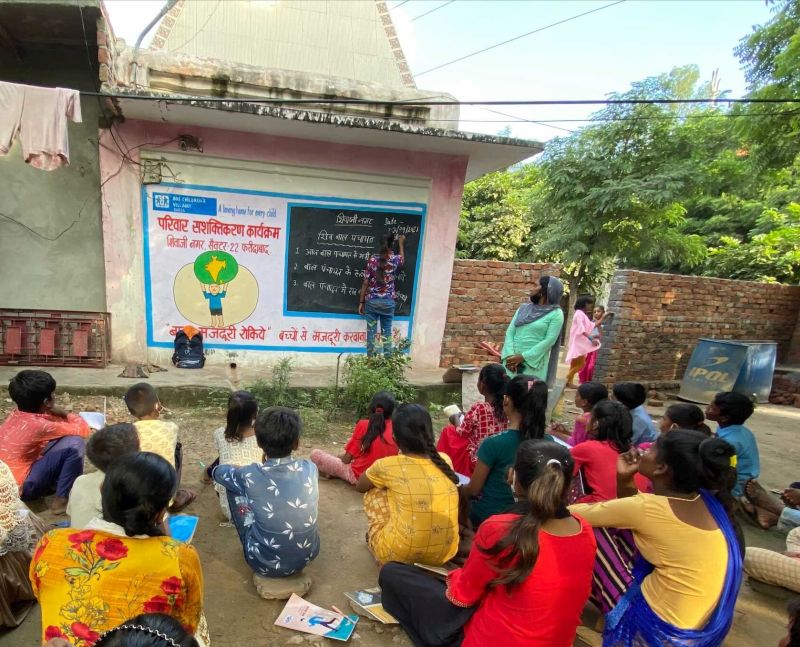Nationwide closure of schools has disrupted the education of children. Physical environment plays an important role in creating an enabling space for children. The pandemic was tough on everyone but children suffered even more.
Lockdowns confined children to the four walls of their homes. It took away the only learning and engagement time that they had with their peers in schools. Studies suggest that the prolonged confinement of children in their homes affects the overall well-being of children and can hamper their growth. With the current rise in COVID-19 infections, there’s a high risk of increase in the number of dropouts among school going children.
The situation is worse for children living in slums. Take, for instance, Shivaji Nagar which is a slum settlement in Faridabad, Haryana. The population consists of migrant labourers from nearby states. The location is home to a population of approximately 10,000-12,000 individuals. The families are engaged in low-paying jobs in nearby factories or are dependent on daily minimal earnings. Life in the slum is challenging because of the lack of basic facilities such as water, toilets and fresh air. Most houses have just one room with no ventilation, but serve as home for families with 5-10 members. Families cook, eat and sleep in one room. These resource and infrastructure constraints adversely impact the holistic development of children growing up in slums.
With the intent of encouraging the continuity of education, child-care NGO SOS Children’s Villages of India painted five walls of Shivaji Nagar with information related to Child Protection, Education, Health and Hygiene. One of the walls was, in fact, turned into a blackboard, to encourage consistent learning at the community level, while schools were shut. This was an initiative under the Family Strengthening Programme Shivaji Nagar-Auto Pin.



